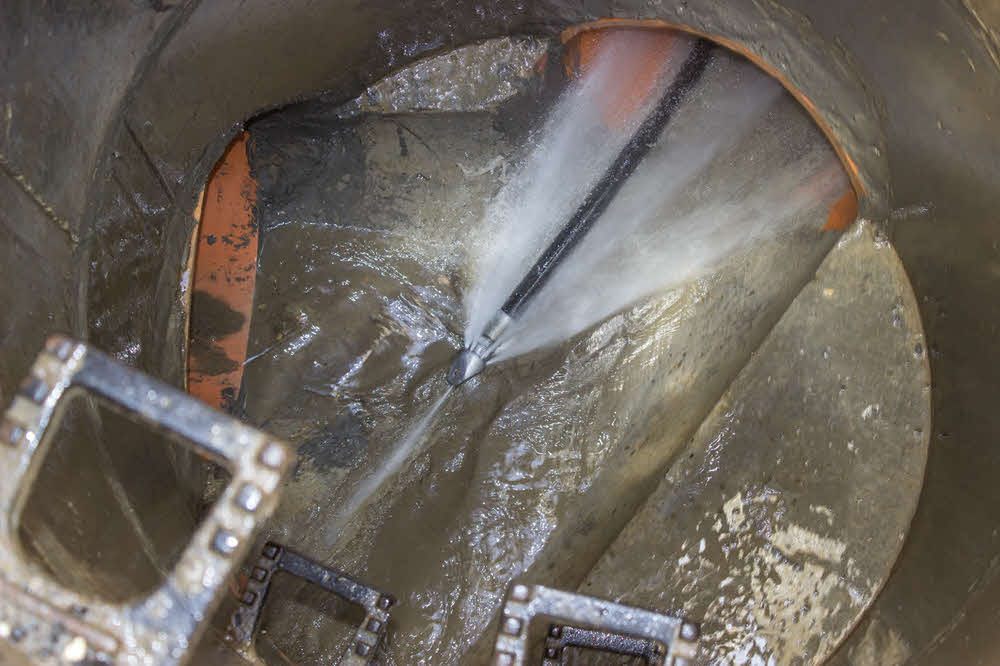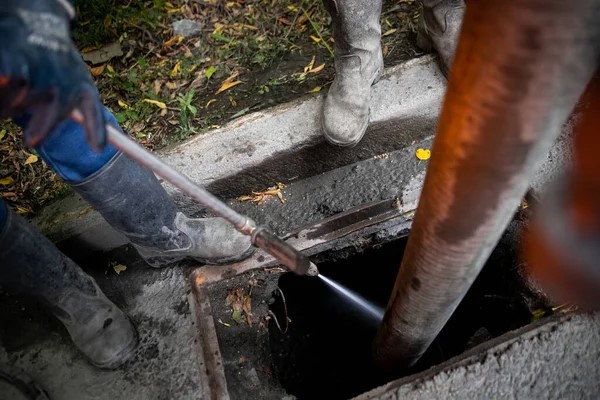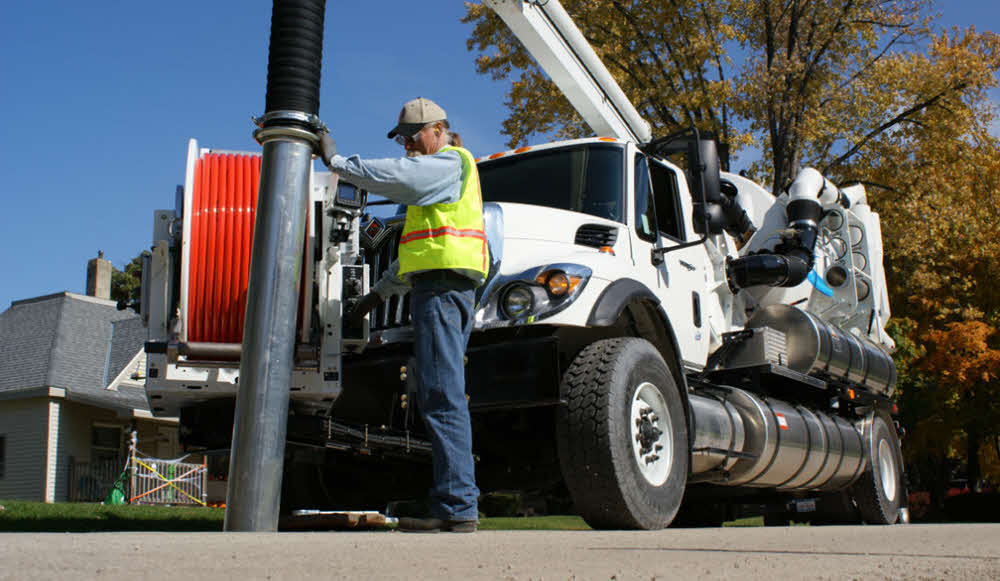Sewer Clean Out Servicesin Marysville MI
Sewer Clean Outs to Keep Your Plumbing Running Smoothly
We Are Locally Owned & Operated For Over 37 Years
Contact Us Today!
We Serve Businesses In And Around The Following Cities:
About Sewer Clean Out Services
Introduction: Unraveling the Necessary Sewer Cleanout
The lifeblood of any commercial property in Marysville is its essential systems, among which the reliable and efficient sewer system holds prime importance. Often overlooked until a problem arises, maintaining the plumbing line and scheduling a routine sewer cleanout is pivotal to your property’s smooth running. More than dealing with an occasional sewer drain clog, a thorough sewer cleanout protects your property’s infrastructure, alleviating the burden of hefty repair and replacement costs down the line. This comprehensive guide articulates everything you need to know about the sewer cleanout process, its accrual benefits, and its real-world applications for commercial properties in Marysville.
What Exactly is a Sewer Cleanout?
In the simplest terms, a sewer cleanout is a point of access to your property’s main sewer line, allowing professional plumbers to easily clear blockages and maintain smooth sewer operations. Essential to detecting and dealing with issues like collapsed sewer lines or main sewer line blockages, routine sewer cleanouts are a preventive measure that forestalls extensive sewer line replacements or repairs that can disrupt your business operation.
The Importance of Sewer Cleanouts
Imagine a scenario where your main sewer line collapses and you’re staring at the exorbitant sewer line replacement cost or considerable repair cost. Surely, that’s not a situation any business owner wants to witness. Routine sewer cleanouts help you dodge such predicaments, serving as an early warning system before minor issues exacerbate into major collapses.
Moreover, a cleanout aids in saving money as it removes the need for excavations or digging to locate the source of repetitive blockages or issues, further preventing the high costs associated with trenchless sewer line replacements. Additionally, consistent cleanouts can prolong your pipe lifespan ensuring they function properly for the longer run.
Understanding the Sewer Cleanout Process
Rightly said, prevention is better than cure, and when it comes to sewer cleanouts, this adage holds exceptional relevance. Allowing your trusted plumber to conduct a thorough sewer line inspection annually can help you escape the high price to replace a sewer line. The common practices include hydro jetting the sewer line or jetting the sewer line, where high-pressure water streams clean the insides of the pipes, and approaching repairs using techniques like sewer pipe jetting. On finding recurring or stubborn blockages, adding an additional cleanout to the sewer line might be considered for better access. Each commercial property presents unique challenges, and as such, custom solutions are often the best way forward.
Companies like D&J Contracting, known of their accountable service in Marysville, can assist your business by conducting thorough sewer line inspections, and if necessary, replace the sewer line or fix the clogged or collapsed sewer line efficiently at justifiable cost.
Indicators That You May Need a Sewer Cleanout
Mindful observation can help detect dramatic issues before they explode into severe problems. Common alerts that forewarn of potential sewer line troubles include slow drains, unpleasant sewage odors emanating from your drains, or abrupt changes in your property’s landscape. Observing your sewer drain for these anomalies can help you proactively approach professionals for a sewer cleanout before complex issues arise.
The Invaluable Benefits of Regular Sewer Cleanouts
Scheduling regular sewer cleanouts with companies of repute like D&J Contracting can have many tangible and intangible benefits for your Marysville business. Apart from maintaining a smooth flow within your sewer pipes, a cleanout can save you from sudden, disruptive sewage backups. It also extends your plumbing fixtures’ life expectancy and significantly reduces the possibility of encountering a sewer emergency. Furthermore, regular cleanouts can identify brewing issues before they fester into significant problems, saving you from substantial replacement or repair costs and securing your peace of mind.
Concluding Thoughts: Make Regular Sewer Cleanouts Your Priority
While mundane as it may seem, opting for regular sewer cleanouts for your commercial property is a prudent choice, one that encapsulates the concept of a stitch in time saves nine. Vigilance is vital, and as business owners, it’s paramount that we turn our attention to often overlooked yet essential maintenance tasks like sewer cleanouts. If you desire expertise and dependability, companies like D&J Contracting, who offer comprehensive services for sewer cleanouts in Marysville, are always equipped and eager to help. Through tailored solutions wielded by skilled hands, rest assured knowing that your pipes are regularly cared for, saving you from unexpected and insurmountable repair costs in the future. As part of an informed maintenance strategy, regular sewer cleanouts stand as an essential pillar, fostering undisrupted operations and imparting invaluable peace of mind. So, prioritise your sewer pipe’s health and enjoy a seamless business running experience while leaving your sewer worries to the professionals.
Sewer Clean Out Services Gallery


Call Us Today to receive your Free Quote for
Sewer Clean Out in Marysville
Serving: Marysville, Michigan

About Marysville, Michigan
Marysville traces its history back to 1786 when Antoin Morass built a sawmill at Bunce Creek. Later, in 1817, Zephaniah W. Bunce sailed up the St. Clair River and settled at the place of the mill, naming it Bunce Creek. This would later become the property of the Detroit Edison Marysville Power Plant. He later became postmaster and a member of the Michigan Territorial Council.
Meanwhile, two businessmen, Meldrum & Park, founded a sawmill in 1792 at the location now known as Cuttle Creek. This settlement was located in the southern part of current day Marysville, two streets are named after them.
Also having a street named for him was Colonel Andrew Mack, a native and the 11th mayor of Detroit. He bought Meldrum and Park’s mill and built his home and a general store along the St. Clair River. The small settlement with Mack’s general store and mill was called “Mack’s Place” and was awarded a post office. Mack was a state representative, Colonel in the War of 1812, and a co-founder of the Detroit Free Press. Colonel Mack and his wife, Amelia, are buried on the north bank of Cuttle Creek in the Riverview Golf Course.
Later, Edward P. Vickery settled at the present day foot of Huron Boulevard in Marysville. He named the operation Vickery’s Landing and the settlement surrounding it eventually became known as Vicksburg. In 1854, the Mack’s Place post office was transferred to Vicksburg. However, there was already another Vicksburg, Michigan, so in 1859 the name was changed to Marysville, after Nelson Mill’s wife Mary.
These small settlements were brought together by inventor and engineer, C. Harold Wills. He worked at the Ford Motor Company, and was considered the “right-hand man” of Henry Ford. His contributions to the Ford company included designing Models A through T of the early Ford Motor Company. He was the inventor of many auto improvements including the planetary transmission used in the Models S and T. He was a pioneer in the use of vanadium steel and designed the “Blue Oval” logo, still used on Ford Products today. He resigned in 1919 and moved to Marysville to establish the C. H. Wills & Company on the banks of the St. Clair River. Two years later in 1921, the first Wills Ste. Clair automobile was produced (named for the factory’s location on the St. Clair River). The factory closed in 1926 after 14,000 vehicles were made by the Wills factory.
Wills’ and his partner John Lee provided much of the early infrastructure of Marysville, including electricity, sidewalks, roads, etc. so that Wills is credited with the street design and city planning of Marysville. He nicknamed Marysville the “Dream City”. The main area of the city to be developed before his company folded was the area surrounding Washington Elementary School. The community was deeply affected by the Great Depression, and the vision for the city was never fully realized. Subdivision development in the later half of the 20th century has further offset the strategic plan for the City of Marysville.
Wills did succeed to the extent that the Marysville area is nowadays a vibrant community. Wills’ former factory currently houses the Chrysler Corporation MOPAR parts distribution facility.
Marysville was incorporated as a village in 1919. It became an incorporated city in 1924.
- According to the United States Census Bureau, the city has a total area of 8.30 square miles (21.50 km), of which 7.31 square miles (18.93 km) is land and 0.99 square miles (2.56 km) is water.
- It is considered to be part of the Thumb of Michigan.
- Marysville can also be considered as in the Blue Water Area.
- The city lies on the border between Michigan and Ontario formed by the St. Clair River
- Marysville is neighbored by Port Huron, Michigan to the north, St. Clair, Michigan to the south, Kimball Township, Michigan to the west, and Corunna, Ontario to the east.
| Census | Pop. | Note | %± |
|---|---|---|---|
| 1920 | 941 | — | |
| 1930 | 1,405 | 49.3% | |
| 1940 | 1,777 | 26.5% | |
| 1950 | 2,534 | 42.6% | |
| 1960 | 4,065 | 60.4% | |
| 1970 | 5,610 | 38.0% | |
| 1980 | 7,345 | 30.9% | |
| 1990 | 8,515 | 15.9% | |
| 2000 | 9,684 | 13.7% | |
| 2010 | 9,959 | 2.8% | |
| 2020 | 9,997 | 0.4% | |
| U.S. Decennial Census | |||
As of the census of 2010, there were 9,959 people, 4,160 households, and 2,738 families residing in the city. The population density was 1,362.4 inhabitants per square mile (526.0/km). There were 4,515 housing units at an average density of 617.6 units per square mile (238.5 units/km). The racial makeup of the city was 97.5% White, 0.3% African American, 0.2% Native American, 0.6% Asian, 0.4% from other races, and 0.9% from two or more races. Hispanic or Latino of any race were 1.8% of the population.
There were 4,160 households, of which 29.8% had children under the age of 18 living with them, 53.1% were married couples living together, 9.1% had a female householder with no husband present, 3.6% had a male householder with no wife present, and 34.2% were non-families. 30.3% of all households were made up of individuals, and 14.7% had someone living alone who was 65 years of age or older. The average household size was 2.39 and the average family size was 2.99.
The median age in the city was 42 years. 23.4% of residents were under the age of 18; 7% were between the ages of 18 and 24; 24% were from 25 to 44; 28% were from 45 to 64; and 17.5% were 65 years of age or older. The gender makeup of the city was 48.1% male and 51.9% female.
As of the census of 2000, there were 9,684 people, 4,025 households, and 2,741 families residing in the city. The population density was 1,395.6 inhabitants per square mile (538.8/km). There were 4,180 housing units at an average density of 602.4 units per square mile (232.6 units/km). The racial makeup of the city was 98.18% White, 0.18% African American, 0.30% Native American, 0.43%Asian, 0.01% Pacific Islander, 0.33% from other races, and 0.57% from two or more races. Hispanic or Latino of any race were 1.16% of the population.
There were 4,025 households, out of which 30.8% had children under the age of 18 living with them, 57.4% were married couples living together, 8.0% had a female householder with no husband present, and 31.9% were non-families. 28.5% of all households were made up of individuals, and 14.3% had someone living alone who was 65 years of age or older. The average household size was 2.40 and the average family size was 2.96.
In the city, the population was spread out, with 24.4% under the age of 18, 6.9% from 18 to 24, 28.4% from 25 to 44, 23.3% from 45 to 64, and 17.1% who were 65 years of age or older. The median age was 39 years. For every 100 females, there were 94.0 males. For every 100 females age 18 and over, there were 89.2 males.
The median income for a household in the city was $49,299, and the median income for a family was $60,028. Males had a median income of $47,859 versus $27,321 for females. The per capita income for the city was $23,443. About 3.1% of families and 4.6% of the population were below the poverty line, including 5.1% of those under age 18 and 8.4% of those age 65 or over.
Call Us Today to receive your Free Quote for
Sewer Clean Out in Marysville
Related Services in Marysville, Michigan
We Serve Businesses In The Following Zip Codes:
48007, 48015, 48021, 48026, 48035, 48036, 48038, 48042, 48043, 48044, 48045, 48046, 48047, 48048, 48050, 48051, 48066, 48071, 48080, 48081, 48082, 48083, 48084, 48085, 48088, 48089, 48090, 48091, 48092, 48093, 48098, 48099, 48225, 48230, 48236, 48310, 48311, 48312, 48313, 48314, 48315, 48316, 48317, 48318, 48397